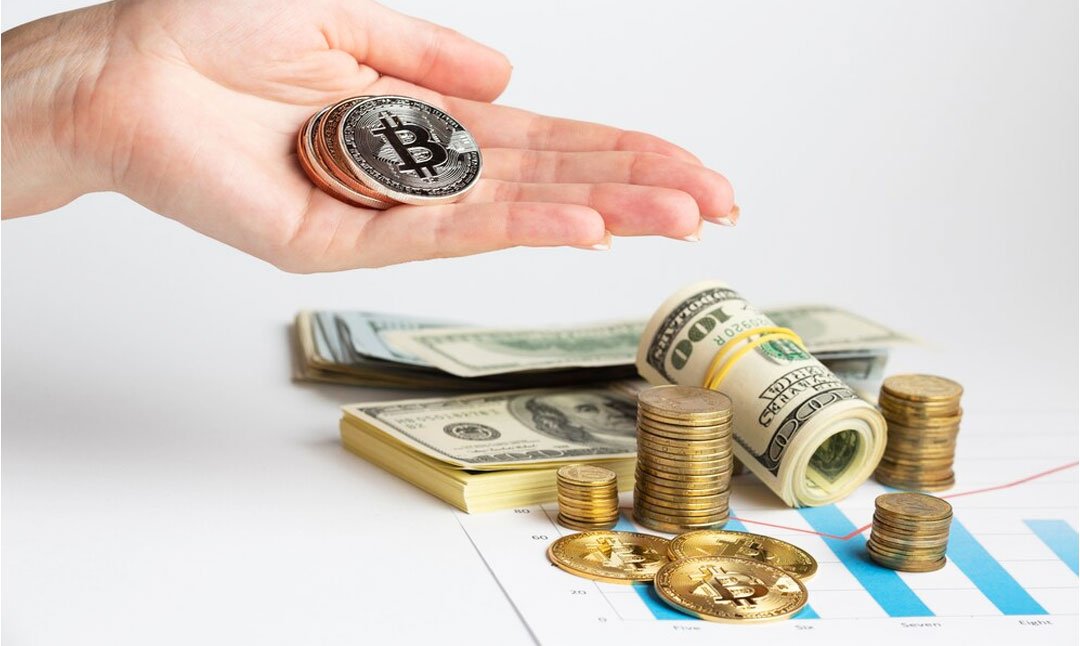Crypto
Pros and Cons of Using Low-Fee Crypto Exchanges: Everything to Know Here
Published
2 years agoon
By
Admin
When you start cryptocurrency trading, choosing the right platform is an essential decision. Many traders are attracted to low-fee exchanges because they can save money. However, these low fees have both benefits and drawbacks.
You might be confused there, Don’t worry. This article will help you understand the pros and cons of using low-fee crypto exchanges, so you can make a smart choice.
We’ll examine how these exchanges can save you money and increase profits and explore potential issues like security risks and hidden costs.
Understanding Low-Fee Crypto Exchanges
Low-fee crypto exchanges are platforms where you can buy and sell cryptocurrencies at lower transaction costs than other exchanges. These platforms are popular with traders who want to save money on fees and increase profits.
However, well-known low-fee exchanges include Binance, Kraken, and KuCoin. These exchanges not only offer low fees but also support a wide variety of cryptocurrencies, making them attractive to traders looking for diverse options.
Pros of Using Low-Fee Crypto Exchanges
1. Cost Savings
One of the biggest advantages of low-fee exchanges is saving money. Lower transaction fees mean you get to keep more of your money when you trade. For instance, while some exchanges may charge up to 0.5% per trade, low-fee platforms might only charge 0.1% or even less. Over time, these savings can add up, especially for those who trade frequently.
Example:
If you trade $10,000 worth of cryptocurrency on an exchange with a 0.5% fee, you will pay $50 in fees. On a low-fee exchange with a 0.1% fee, you would only pay $10, saving $40 per trade.
2. Increased Profit Margins
Lower fees help increase profit margins. By reducing the cost of each transaction, traders can keep more of their earnings. This is especially useful for day traders who make many trades each day, as lower fees can greatly boost their overall profits.
Calculation:
Imagine making 100 trades a month. With a high-fee exchange charging $50 per trade, your monthly fees would be $5,000. On a low-fee exchange charging $10 per trade, you would only spend $1,000 in fees, saving $4,000 each month.
3. Attractiveness for Frequent Traders
Low-fee exchanges are very appealing to day traders and those who trade often. The savings on fees can make a big difference in their strategies and overall profits.
Statistics:
According to a report by CryptoCompare, exchanges with lower fees tend to have higher trading volumes, showing they are popular among frequent traders.
4. Access to a Broad Range of Assets
Many low-fee exchanges offer various cryptocurrencies, making it easy for traders to diversify their portfolios. This broad range of assets is helpful for those looking to invest in multiple cryptocurrencies without facing high fees.
Example:
Platforms like Binance and KuCoin support hundreds of different cryptocurrencies, giving traders many options for diversification.
Cons of Using Low-Fee Crypto Exchanges
1. Security Concerns
One of the main issues with low-fee exchanges is security. To keep costs down, some platforms might not invest enough in security measures, making them more vulnerable to hacks and breaches.
Example:
In 2019, Binance, a major low-fee exchange, was hacked, resulting in the theft of over $40 million worth of Bitcoin. Although Binance had good security and reimbursed users, this incident shows the potential risks.
2. Lower Customer Support Quality
Low-fee exchanges often have lower-quality customer support because they spend less on operations. This can be a problem if you have issues with your account or need help with a transaction.
User Reviews:
Many users have reported slow response times and unhelpful support on low-fee platforms, which can be frustrating when quick assistance is needed.
3. Hidden Costs
While trading platform fees may be low, some exchanges add hidden costs like high withdrawal or deposit fees. These extra costs can cancel out the savings.
Example:
An exchange might charge a low 0.1% trading fee but have a $50 withdrawal fee, making it costly to move your funds.
4. Regulatory Issues
Some low-fee exchanges operate in areas with weak regulatory oversight. This can pose risks to your funds and compliance with laws. Unregulated exchanges might not follow strict security protocols, increasing the risk of fraud or insolvency.
Importance:
Using exchanges that follow regulatory standards can give you peace of mind, as you know your investments are protected.
“By considering these factors, you can weigh the benefits and drawbacks of low-fee crypto exchanges to make the best choice for your trading needs.”
Balancing Cost and Quality
When picking a crypto exchange, balancing cost and quality is crucial. Low fees are appealing, but they shouldn’t be your only consideration. Look at the exchange’s reputation, security measures, customer support, and regulatory compliance.
Tips for Evaluation
- Security: Ensure the exchange has strong security protocols, like two-factor authentication and cold storage for funds.
- Customer Support: Read reviews and testimonials to gauge the quality of customer support.
- Regulatory Compliance: Verify if the exchange is regulated by reputable financial authorities.
- Hidden Fees: Carefully Check the fee structure for hidden costs that could affect your trading.
By evaluating these factors, you can choose an affordable and reliable exchange.
Conclusion
Low-fee crypto exchanges offer great benefits like cost savings, higher profit margins, and access to a wide range of assets.
However, they also have potential downsides, such as security risks, lower-quality customer support, hidden fees, and regulatory issues. By evaluating these factors and considering your own trading needs, you can find an exchange that balances cost and quality.
What’s your experience with low-fee crypto exchanges? Check out our related articles and guides for more information on cryptocurrency trading and choosing the right exchange.


The Ultimate Guide to Choosing the Perfect Body Moisturiser for Radiant Skin

Miles Xavier Tate: The Quiet Son of Hollywood’s Larenz Tate

Krista Visentin: The Private Life of David Visentin’s Wife

Aaron Hernandez: A Glimpse into His Life, Legacy, and the Intriguing Story of Aaron Hernandez’s House

From Research to Results: How Legal AI Supports Lawyers

Jody Morrill Wolcott: The Quiet Woman Behind Johnny Carson’s Early Life

Orthodontic Treatment Options Every Patient Should Know

How to Plan a Short Wellness Escape Without Long Travel

Quick and Reliable Solutions for Your Moving Needs

What Businesses Should Know About Post-Quantum Readiness

Revolutionizing Healthcare: The Emergence of AI-Driven Analytics

Carol Kirkwood’s Journey: Her Real Age, Husband, Career, and More

How Machine Learning and AI are Redefining the Future?

Aliza Barber: Meet Lance Barber’s Wife, Age, Life, Profile, Career and Net Worth

Evelyn Melendez: Jordan Knight’s Wife Bio, Marriage, Family, Career and Net Worth

Ilan Tobianah Biography: Family, Marriage, Lifestyle, Career and Net Worth

King Von’s Autopsy Report: The Truth Behind the Tragic Death

Who was Alice Marrow? Everything to Know About Ice-T’s and His Mother

Body Positivity and Bodycon: Embrace Your Shape with Homecoming Dresses

Meet Otelia Cox: The Supportive Wife of Tony Cox – A True Fairy Tale Romance

The Ultimate Guide to Choosing the Perfect Body Moisturiser for Radiant Skin

Miles Xavier Tate: The Quiet Son of Hollywood’s Larenz Tate

Krista Visentin: The Private Life of David Visentin’s Wife

Aaron Hernandez: A Glimpse into His Life, Legacy, and the Intriguing Story of Aaron Hernandez’s House

From Research to Results: How Legal AI Supports Lawyers

Jody Morrill Wolcott: The Quiet Woman Behind Johnny Carson’s Early Life

Orthodontic Treatment Options Every Patient Should Know

How to Plan a Short Wellness Escape Without Long Travel

Quick and Reliable Solutions for Your Moving Needs

What Businesses Should Know About Post-Quantum Readiness
Category
Trending
-

 Health2 years ago
Health2 years agoRevolutionizing Healthcare: The Emergence of AI-Driven Analytics
-

 News5 months ago
News5 months agoCarol Kirkwood’s Journey: Her Real Age, Husband, Career, and More
-

 Technology2 years ago
Technology2 years agoHow Machine Learning and AI are Redefining the Future?
-

 Celebrity2 years ago
Celebrity2 years agoAliza Barber: Meet Lance Barber’s Wife, Age, Life, Profile, Career and Net Worth






